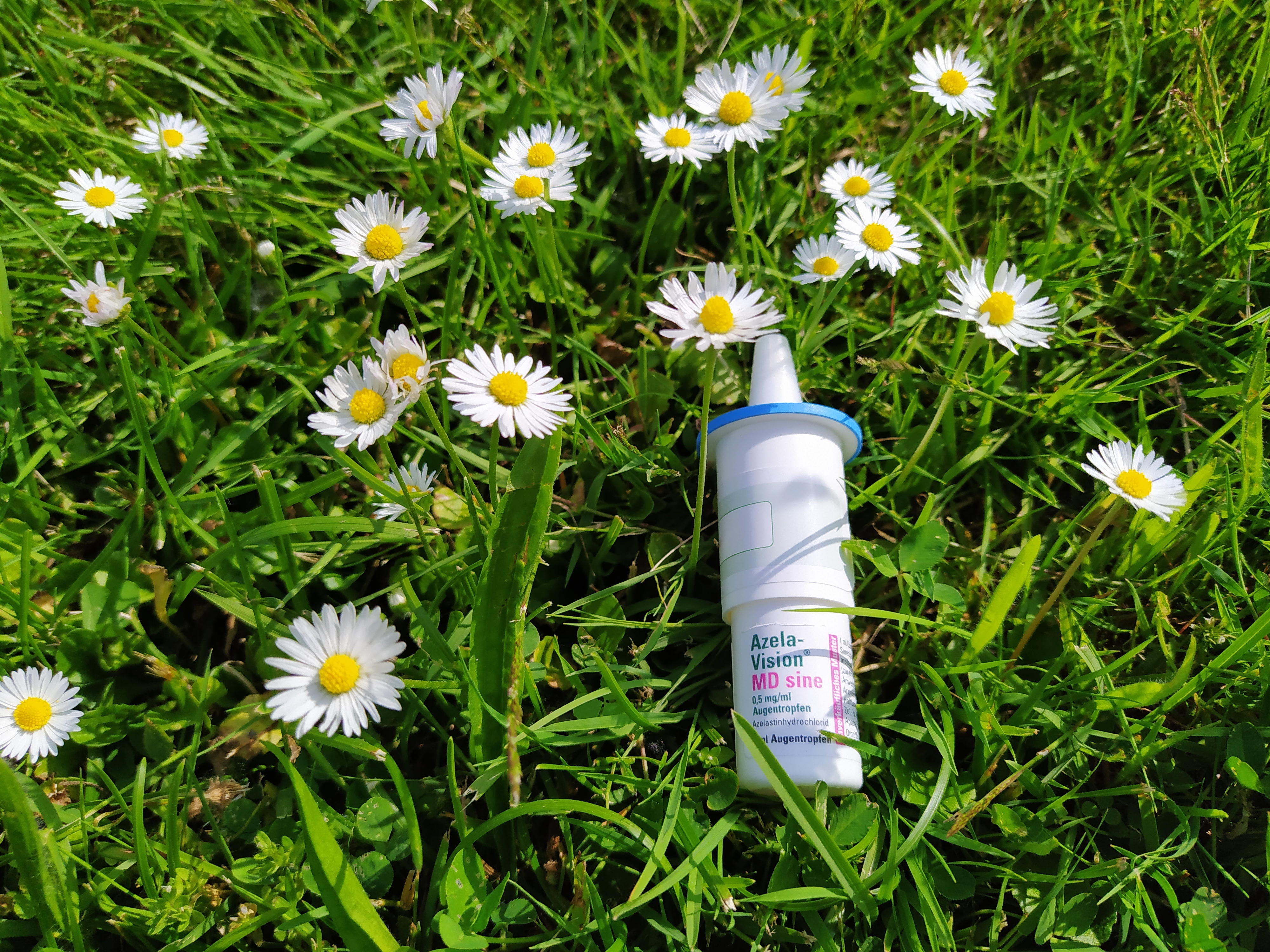
Liebe Freunde des Friedens und der Freiheit,
liebe Mitleser,
Sommerzeit ist Pollenzeit. Für Pollenallergiker wie mich heisst dass jedes Jahr aufs Neue vor allemjuckende Augen, verstopfte Nase und Niesreiz. Mein bevorzugtes Antiallergikum ist dabei Azelastin. Ein Wirkstoff der die Histamin bedingten Effekte blockieren soll und tatsächlich eine gute Linderung der Beschwerden herbei führt.
Doch so wie es scheint hat Azelastin nicht nur antiallergische, sondern auch eine antivirale Wirkung - allem voran gegen SARS-CoV-2 Viren.
So hat die HNO Abteilung and der Uniklinik in Köln eine Studie mit dem Antiallergikum aufgelegt, nachdem sich herausgestellt hat dass es die Viruslast reduziert und die Vermehrung des SARS-CoV-2 Virus zu blockieren scheint.
Noch besser ist laut einem kürzlich erschienenen Papier im Nature der antivirale Effekt des Antiallergikums Clemastin. Die Autoren der Studie schreiben hierzu - Zitat:
Antiviral tests using native SARS-CoV-2 virus in Vero E6 cells confirmed that 7 of these drugs (clemastine, amiodarone, trimeprazine, bosutinib, toremifene, flupenthixol, and azelastine) significantly inhibited SARS2 replication, reducing supernatant viral RNA load with a promising level of activity. Three of the drugs were classified as histamine receptor antagonists with clemastine showing the strongest anti-SARS2 activity (EC50 = 0.95 ± 0.83 µM).
Das Amiodaron als möglicher Therapieansatz zur Behandlung von COVID-19 in Frage kommt hatte ich erstmalig hier bereits Anfang 2020 auf der Blockchain publiziert. Link
Bestätigt wurdwn meine hypothetischen Überlegungen von Anfang 2020 zur endosomalen Inhibition der SARS-CoV-2 Inhibition inzwischen durch in vitro Untersuchungen an Zellkulturen. In dem oben genannten Nature Artikel heisst es hierzu - Zitat:
We found that 3 of these active drugs (clemastine, trimeprazine and azelastine) are histamine receptor antagonists, among which clemastine had the best EC90 (2.01 ± 0.94 µM) and EC50 (0.95 ± 0.83 µM) values. Clemastine caused no cytotoxic effects when given at concentrations below 20 µM, with an SI > 20. Trimeprazine and azelastine showed less activity, which implies the shared structural and activity relationships among these histamine antagonists. Amiodarone, which is used to control arrhythmia via inhibition of ATP-sensitive potassium channels, also showed activity against SARS2 infection (EC50 = 1.69 µM) with a good SI index (SI > 11.83).
Sollten sich in vivo bei der Anwendung beim Menschen der Verdacht erhärten, dass die Antihistaminika wie Clemastin oder Azelastin die Replikation des SARS-CoV-2 Virus inhibieren, dann wäre damit einwichtiger Schritt in der Frage der Prävention bei exponierten Personengruppen, wie auch in der Behandlung bereits infizierter Personen möglich und zudem leicht verfügbar.
Licht & Liebe.
Peace!
Quellenhinweis:
1. Nature - Antihistaminka als SARS-COV-2 Entryinhibitoren zur Behandlung von COVID-19
Important note:
The information provided here is based on the author's conclusions and own considerations of community members. The author's or community members conclusions do not represent any kind of therapy recommendation for emerging infectious diseases or infected patients, since there are still no clinical efficacy tests for these theoretical considerations for therapy of infectious diseases, which would prove a benefit for this type of treated patient - also if the author of an article is propably personally convinced that such therapy or test or vaccine can be of benefit to infected patients. As there are no clinical studies to date on the use of offlabel drugs and substances for virus infections in humans, as far as I know, therapeutic treatments with these substances should only be carried out as part of a clinical trial in suitable centers. The use of drugs mentioned in this article or other articles in this community by other members as part of an off-label use in the case of coronavirus infection or other kind off illness is explicitly discouraged due to the lack of data in human use until now, as long as the benefit of appropriately treated patients with consideration of the side effects of such therapies is proven in controlled studies could.
This contribution is only intended to encourage scientists to make increased efforts to develop adequate antiviral therapies that have a broad spectrum of antivirals. They are to be understood by the author of this article as a medical-theoretical contribution to the improvement of medical care for people all over the world - but do not include any kind of trade request for their practical implementation in humans without prior clinical examination by appropriate centers.
Off-label use of such experimental therapeutic strategies in the case of emerging viral diseases is at present not recommended by the author of this article. The presented informations are only representing theoretical therapeutic strategies mentioned by the author or
other members to induce further clinical investigations in the field of emerging infectious diseases in future.
Wichtiger Hinweis:
Dieser Beitrag stellt keine Empfehlung zur Anwendung von Medikamenten oder anderen Substanzen für die Behandlung von Erkrankungen oder Infektionen dar, sondern dient ausschliesslich zu Informationszwecken und dem wissenschaftlichen Austausch. In konkreten Erkrankungsfällen sollten Patienten und Erkrankte stets das weitere therapeutische Vorgehen mit den jeweils behandelnden Ärzten abstimmen - zumal der off label Einsatz von bislang klinisch nicht erforschten Therapieoptionen mit erheblichen Risiken für Leib und Leben verbunden sein kann und sich der Stand der Wissenschaft fortlaufend ändert.
Für die Richtigkeit der in diesem Beitrag gemachten Angaben wird jegliche Gewähr ausgeschlossen, da teilweise eigene Schlussfolgerungen auf Grundlage der Arbeiten von Dritten gezogen werden, für die bislang jeder wissenschaftliche Beweis fehlt. Im Zweifel ist der behandelnde Arzt zu fragen und die Möglichkeit anderer Ursachen für eine Erkrankung ebenso in Erwägung zu ziehen.

Keine Kommentare:
Kommentar veröffentlichen